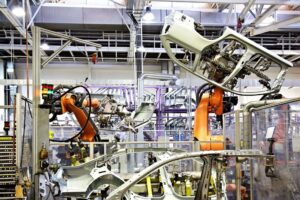In one of our previous blogs, we emphasized the challenges that engineer-to-order manufacturers face in their day-to-day operations. Certainly, ETO manufacturing is not a piece of cake considering the fact that each order is customized and completely different from the other from design to delivery.
Building custom products calls for stringent processes and best practices to meet optimum efficiency, cost-savings & profitability, customer satisfaction, and keeping the competition behind.
While we have listed out key processes and workflows of ETO manufacturing in one of our previous blogs, let us look at some of the best practices of Engineer-to-Order manufacturing.
Best Practices in ETO Manufacturing
Swift & Consistent Communication with Stakeholders
ETO manufacturing involves consistent interaction with stakeholders such as customers, partners, suppliers, and vendors throughout the manufacturing process from RFQ to delivery.
With customers, the communication begins at the RFQ stage and goes on even post-delivery. Maximum communication happens during the design stage as the product has to be designed based on customer requirements. There’s continuous interaction between the customer and the design team to ensure they get it right. Not to mention, the constant design and specification changes that require a lot of to and fro between the two parties.
How it can be done?
CAD Integration with ERP
An ERP can be integrated with industry-leading CAD & nesting applications. With this, manufacturers can,
- Instantly share designs with customers and suppliers through EDI to ensure total collaboration and transparency.
- Incorporate design changes via the CAD interface and update it to the ERP.
- Instant auto-update of design changes & requirements to master design documents, sales orders, and work orders.
Electronic Data Interchange (EDI)
Real-time communication has become a lot easier, thanks to Electronic Data Interchange (EDI). With EDI, manufacturers can exchange critical information with their suppliers, vendors, and customers in real-time. It eliminates the manual keying of information at both the manufacturer’s and stakeholder’s end at every transaction stage. This helps reduce typo errors, misinformation due to bad handwriting, missing documents, etc.
Overall, EDI reduces overhead costs that go into procuring tons of paper, printing them into various forms, storing and filing them, posting them to stakeholders
Keep Track of Project Progress
Every engineer-to-order is treated as a project in an ETO environment and therefore, it is very important to keep track of project progress from start to finish. This means setting up schedules, deadlines, allocating budgets, tasks, and creating tracking mechanisms for smooth project operations. There is a need for a dedicated project manager who can handle these tasks and ensure the project is on track at all times.
How it can be done?
Project Management Module
A project management module within an ERP helps keep track of one or more projects from start to finish. With a dedicated module, project managers can oversee and manage end-to-end project-related activities from sales order creation to product delivery to the customer. They can set up project deadlines, create budgets, schedules, project tasks, categories and track them till closure.
Get that Bill of Materials Right
Bill of Materials (BOM) plays a vital role in ETO manufacturing and coincides with the design phase. Getting the BOM right decides the success of the entire project as the entire product will be manufactured based on it. Once the product design is finalized, the BOM has to be arrived at accurately, down to the minutest part. The BOM documentation has to be clear and work orders need to be generated to manufacture or procure them.
How it can be done?
BOM & Routing in ERP
Manufacturers can easily generate BOM from integrated CAD software and import it into the ERP. The imported BOM becomes a master BOM and is displayed as a hierarchical or a flattened, multi-level structure within the ERP. Manufacturers can modify this master BOM by adding a new BOM structure or removing an existing sub-BOM. They can create an item master based on the master BOM and initiate procurement/manufacturing for each item in the list.
Managing Engineering Changes
Change is the only constant in engineer-to-order manufacturing. ETO manufacturers see constant changes made to the design, BOM, and routing and even to sub-assemblies and finished products. It gets challenging to keep track of every change that has been initiated by the customer or the supplier or the manufacturer themselves.
Manufacturers need to accurately manage these changes by tracking and documenting them at every step. If the changes are not tracked, it will have a bad impact on overall production leading to delays and a product not adhering to customer requirements.
How it can be done?
Engineering Change Management
With ERP’s Engineering Change Management feature, they can stay on top of all engineering changes. They can track changes in materials, items, parts, and tools in real-time. They can track revisions for all finished products, BOMs, and routing changes. In terms of documentation, they get a full history of previous revisions. They can recalculate the cost of finished products based on changes in BOM or routing.
This helps manufacturers stay up-to-date with any changes in items, components, or materials throughout all stages of production, thanks to the comprehensive tracking and documentation capabilities of the system.
Tracking & Ensuring Product Quality
It is very critical to implement quality control processes that track and measure quality parameters at each manufacturing stage and report deviations immediately. Adequate quality measures such as regular testing, inspections, & audits ensure that the product compiles to relevant industry standards and adheres to customer satisfaction. A total quality management system leads to reduced reworks, scrap quantity, cost, time, and manpower savings.
How it can be done?
Quality Management
ERP software has an in-built Quality Management feature that is integrated with RMA, goods receiving, shop-floor transactions, and inventory management. The bar-code integration allows operators to scan each incoming shipment during goods receiving and record it within the ERP. Personnel can record deviations during quality inspections from their mobile devices at each manufacturing stage.
Robust Manufacturing Workflows
It is important for ETO manufacturers to have manufacturing processes that are robust, flexible, and adapt to constant changes. In order to do this, they need to have consistent, real-time visibility of shop-floor operations, goods movement, machine health, material utilization, and labor availability. All of these help them to get proactive input on operations and prevent any unplanned disruption.
How it can be done?
Production Management
An ERP through its robust production management system provides the much-needed flexibility for ETO manufacturers in their day-to-day operations. Apart from getting real-time shop floor information, they can also track machine health to proactively detect breakdowns and prevent them. They can track material consumption and ensure optimum utilization. Work orders are continuously updated to ensure production happens with clockwork precision. The production team also keeps contingency plans and adjustments in place to face probable product design changes that might arrive during the manufacturing phase.
OmegaCube ERP is designed to suit the needs of Engineer to Order Manufacturers. Contact us for an in-depth demo today.






One Response
Just exploring your services